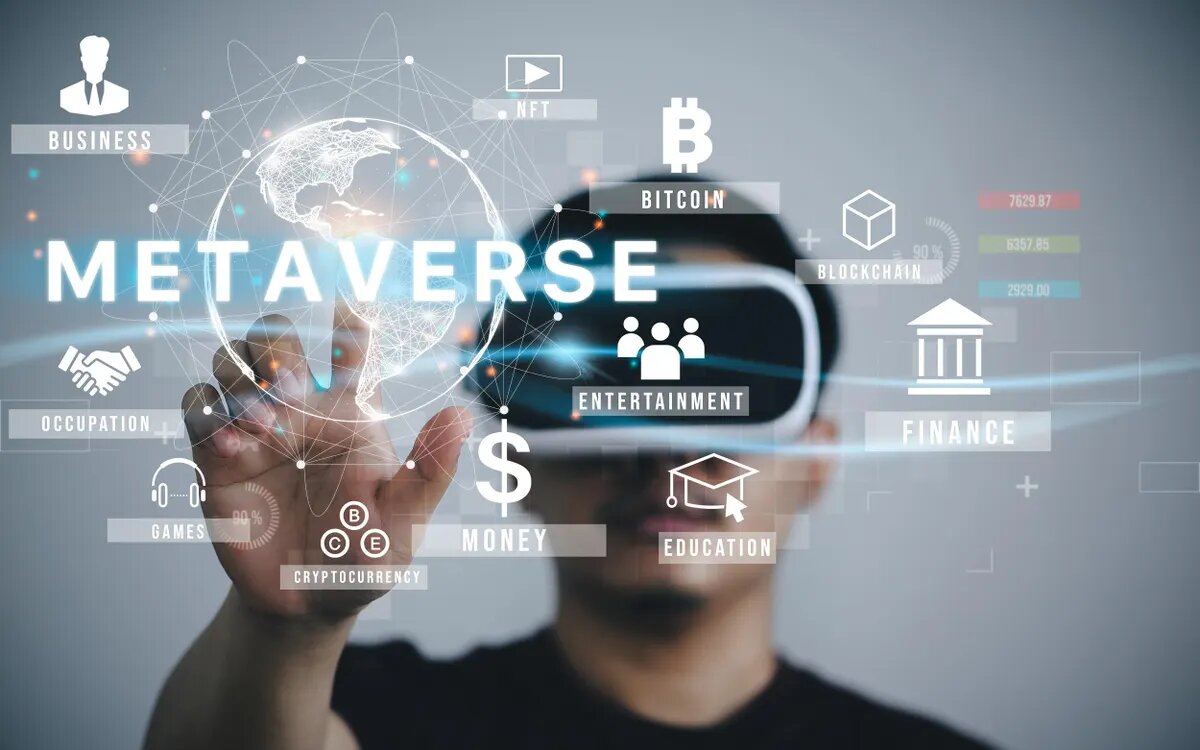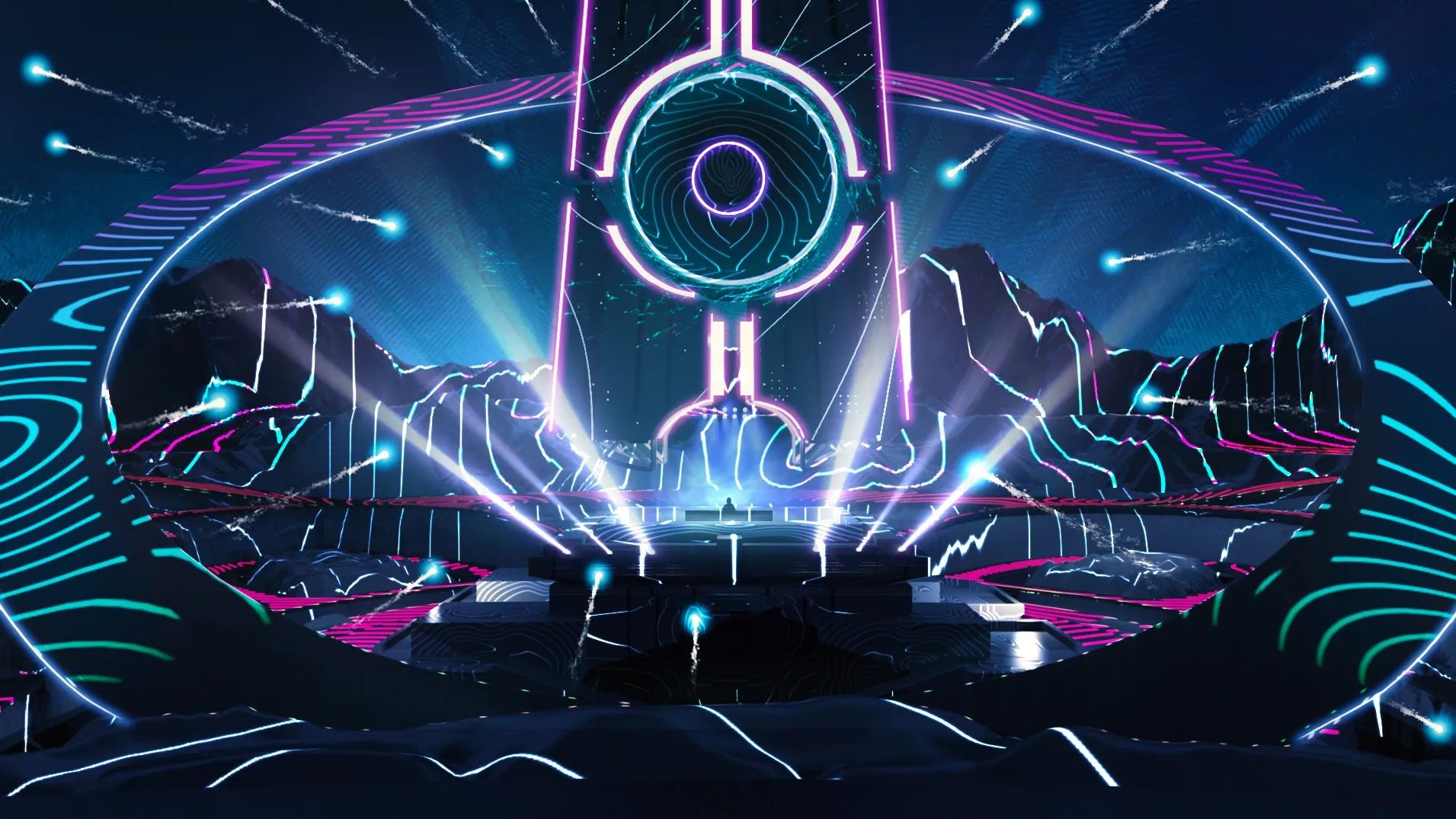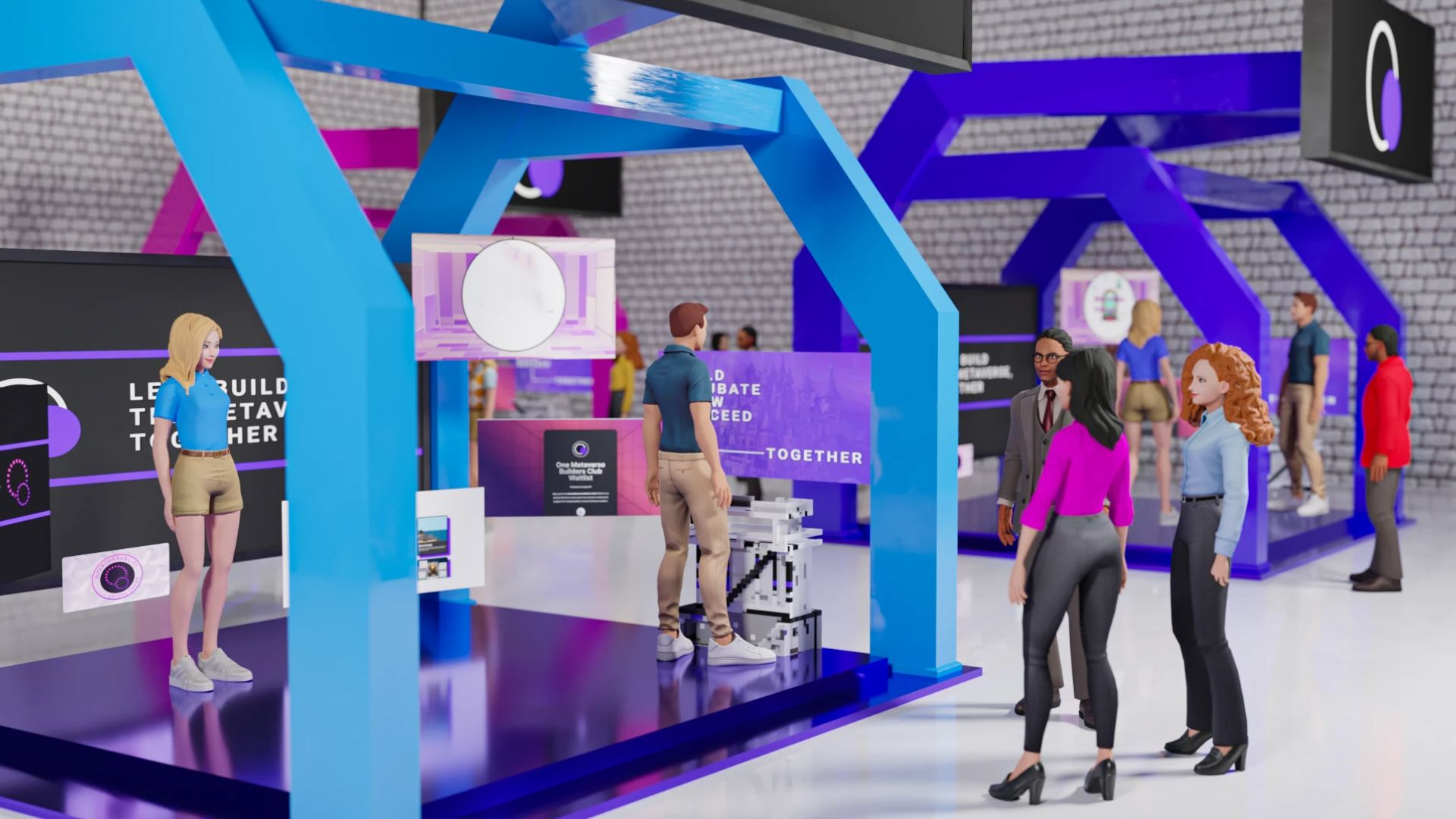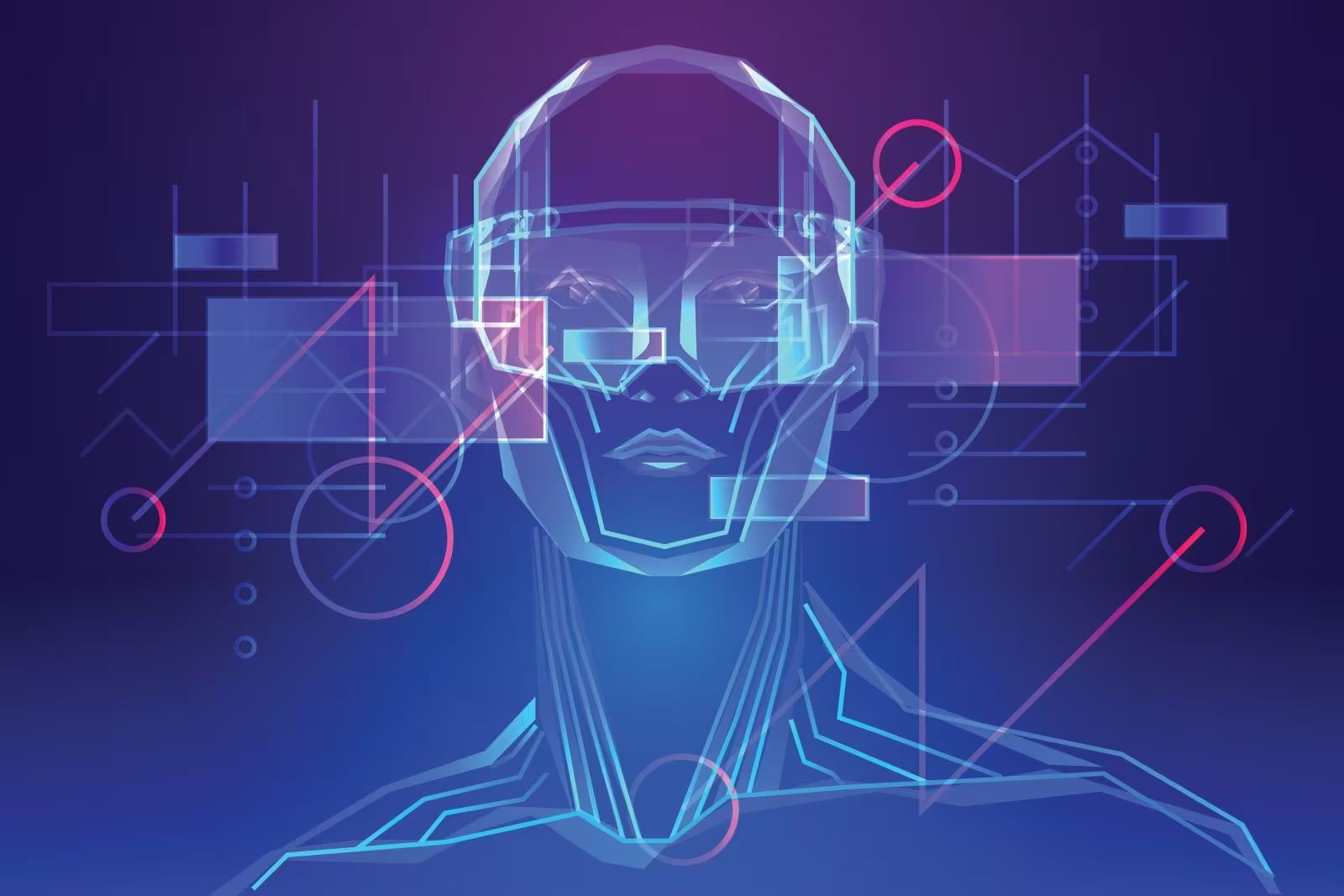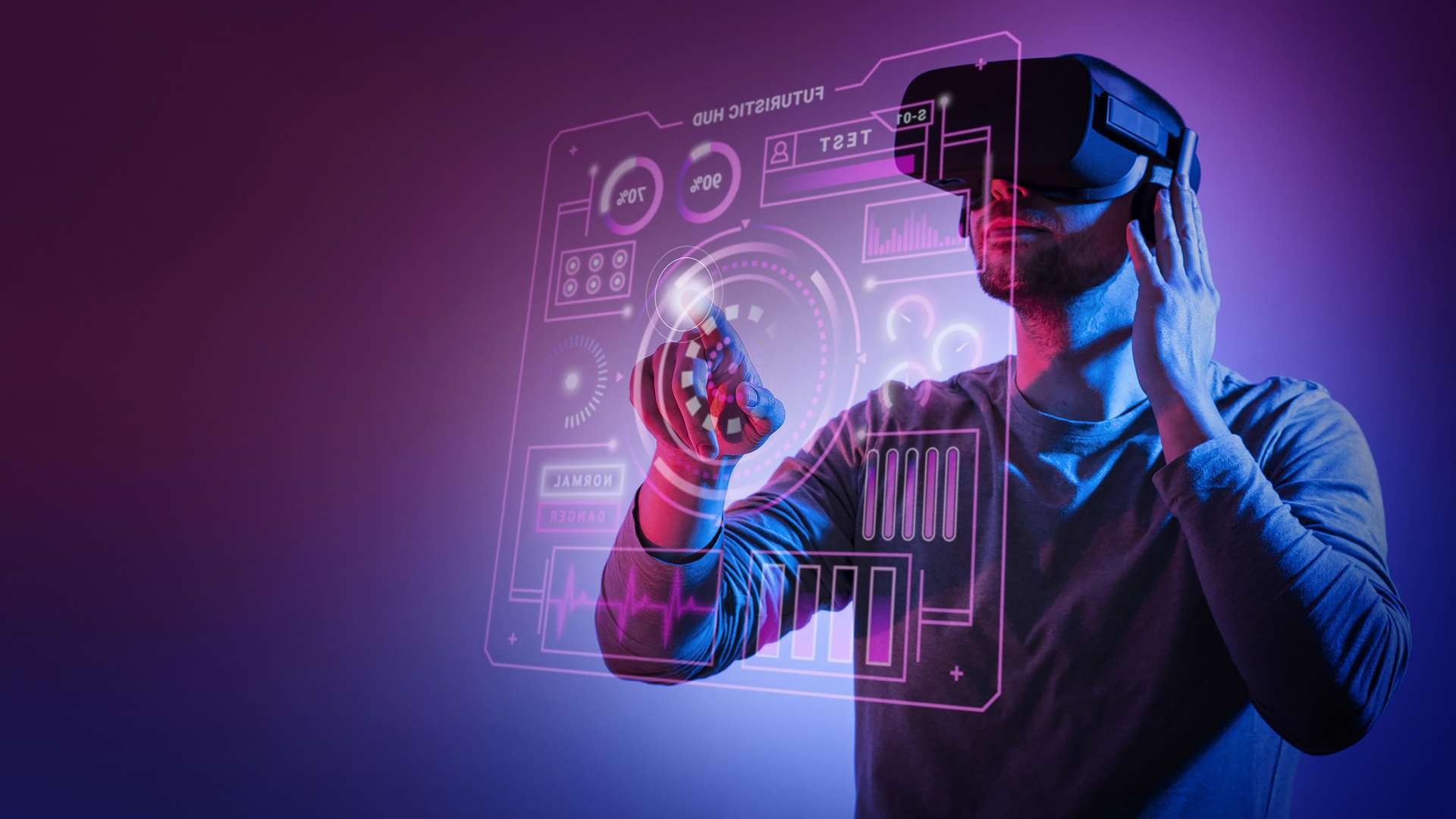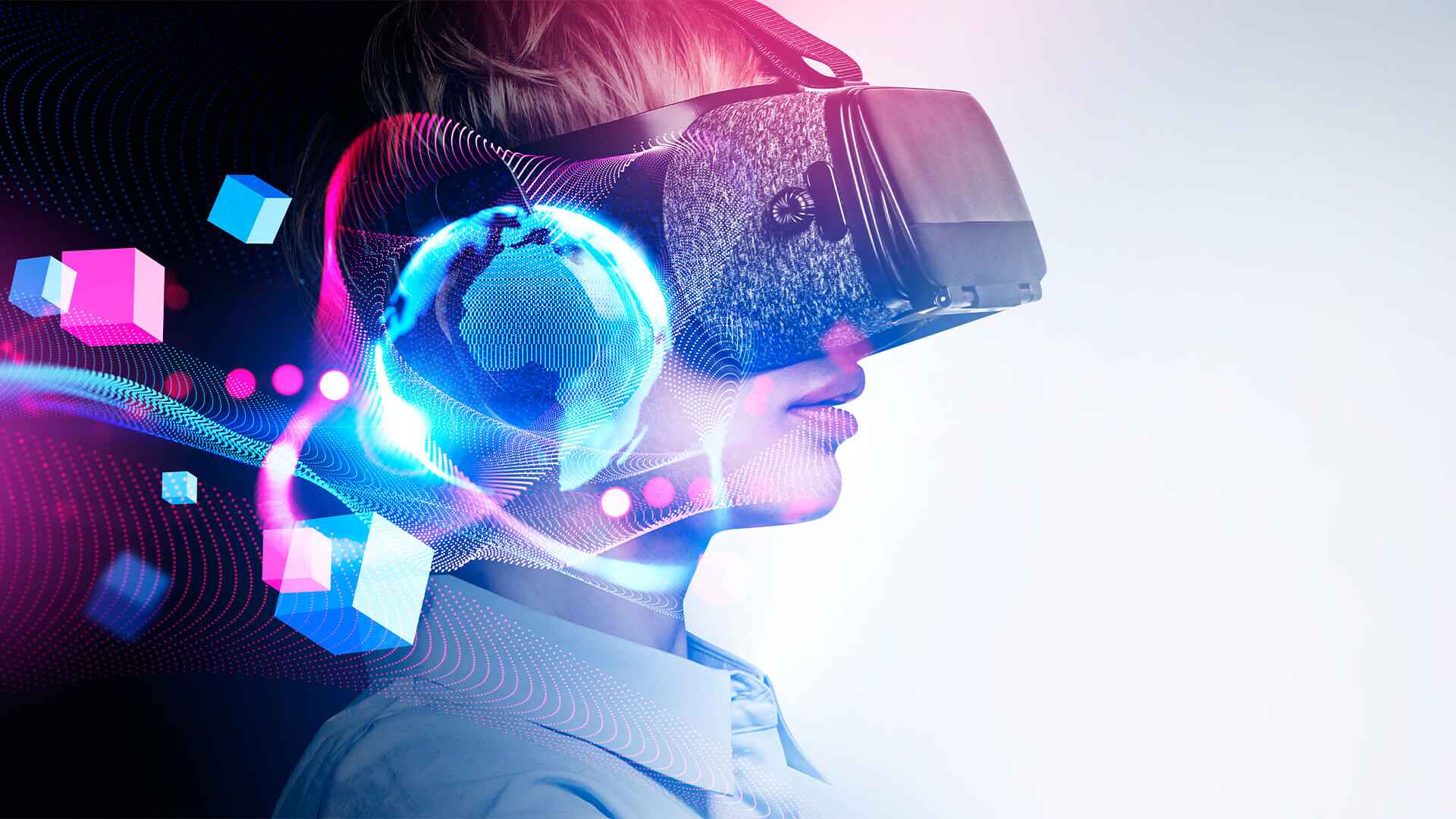Introduction
Welcome to the fascinating world of the metaverse! Over the past few years, the concept of the metaverse has gained significant attention and has become a buzzword in the tech community. The metaverse represents a virtual universe where people can interact, socialize, work, and engage in various activities using digital platforms and technologies. It is a concept that brings together real and virtual worlds into a seamless virtual reality experience.
While the idea of the metaverse has been around for decades, it has gained renewed interest due to recent advancements in technology, particularly blockchain. Blockchain technology, which is best known for powering cryptocurrencies like Bitcoin, has the potential to revolutionize the metaverse and unlock new possibilities for users. It offers a decentralized, secure, and transparent infrastructure that can enable seamless interactions and transactions within the metaverse.
So, how exactly does blockchain fit into the metaverse concept? Well, the metaverse is built on a foundation of digital assets, virtual identities, and decentralized systems. Blockchain provides the underlying infrastructure to create, manage, and trade these digital assets securely. It ensures that virtual objects have proven ownership, can be easily transferred between users, and are protected from fraud and unauthorized alterations.
Furthermore, blockchain can enhance the interoperability of different metaverse platforms and enable seamless cross-platform interactions. It eliminates the need for intermediaries and third-party platforms for asset exchange, allowing users to freely transfer assets and engage in transactions directly within the metaverse ecosystem.
Definition of Metaverse
The metaverse is a term used to describe a virtual universe or space that encompasses a wide range of digital and virtual experiences. It can be thought of as a collective virtual reality that connects various virtual worlds, augmented reality environments, and digital platforms. In the metaverse, users can interact with each other and their surroundings through avatars, explore virtual landscapes, create and trade digital assets, and engage in a variety of experiences.
Unlike traditional virtual reality experiences that are limited to specific applications or games, the metaverse aims to create a cohesive and interconnected virtual reality that seamlessly integrates with the real world. It blurs the boundaries between physical and digital spaces, allowing users to have immersive and interactive experiences beyond their physical limitations.
The metaverse is not limited to a single platform or technology. It can encompass a combination of virtual reality (VR), augmented reality (AR), mixed reality (MR), and other immersive technologies. It can be accessed through various devices such as virtual reality headsets, smartphones, and computers, providing users with a wide range of entry points into the metaverse.
One key aspect of the metaverse is the presence of persistent virtual worlds. These worlds are continually evolving and can be inhabited by individuals or communities of users. They are not limited to a specific time frame but instead exist 24/7, allowing users to engage in activities, build relationships, and create virtual economies that mirror aspects of the real world.
Another important element of the metaverse is the concept of digital ownership. Users can own and trade digital assets, ranging from virtual land and buildings to in-game items, artwork, and even virtual currencies. These assets are often stored and managed using blockchain technology, which ensures secure ownership and traceability.
Overall, the metaverse represents a vision of a future where individuals can seamlessly transition between physical and virtual spaces, interact with others from around the world, and explore endless possibilities in a digital universe.
How Blockchain Technology Fits into the Metaverse Concept
Blockchain technology plays a crucial role in realizing the full potential of the metaverse. By leveraging blockchain’s unique features, the metaverse can become a fully decentralized and transparent ecosystem that empowers users and enables seamless digital interactions. Here are a few ways in which blockchain technology fits into the metaverse concept:
- Digital Asset Ownership: In the metaverse, users can create, trade, and own digital assets such as virtual land, characters, and in-game items. Blockchain technology provides a secure and transparent system for establishing ownership and provenance of these assets. Each asset can be represented as a non-fungible token (NFT) on the blockchain, ensuring that its ownership is immutable and easily verifiable.
- Interoperability: The metaverse consists of multiple virtual worlds and platforms, each with its unique set of rules and assets. Blockchain technology enables interoperability by creating a common standard for cross-platform asset exchange and interoperability. Through blockchain-based protocols and smart contracts, users can seamlessly transfer assets between different virtual worlds and platforms, fostering a more connected and immersive metaverse experience.
- Decentralization: Blockchain removes the need for central authorities and intermediaries, creating a decentralized infrastructure for the metaverse. This ensures that the power is distributed among the users themselves, eliminating the risk of censorship and control by a single entity. It also promotes trust and transparency within the metaverse ecosystem, as blockchain records all transactions and interactions in a transparent and immutable manner.
- Security: The metaverse is susceptible to various security risks, such as hacking, fraud, and unauthorized access. Blockchain provides a robust security framework through its cryptographic algorithms and consensus mechanisms. User identities and transactions can be securely recorded on the blockchain, protecting users from identity theft and ensuring the integrity of the virtual ecosystem.
- Economy and Monetization: Blockchain enables the creation of virtual economies within the metaverse. Users can earn, buy, and sell digital assets, services, and experiences using cryptocurrencies and virtual currencies. Blockchain technology ensures secure and transparent transactions, enabling users to monetize their creations and participate in the metaverse economy.
By leveraging the capabilities of blockchain technology, the metaverse can create a more immersive, decentralized, and user-centric virtual reality experience. It opens up new opportunities for users to create, explore, and engage within a dynamic digital universe.
Advantages of Using Blockchain in the Metaverse
Integrating blockchain technology into the metaverse brings numerous advantages that enhance the user experience, provide security, and promote transparency. Here are some key advantages of using blockchain in the metaverse:
- Ownership and Authenticity: Blockchain enables secure and verifiable ownership of digital assets within the metaverse. Through the use of non-fungible tokens (NFTs), users can prove their ownership of virtual land, artworks, collectibles, and more. This ensures the authenticity of assets and prevents fraud or duplication.
- Interoperability and Cross-Platform Compatibility: Blockchain-based standards and protocols enable seamless asset exchange and interoperability between different metaverse platforms. Users can freely transfer their digital assets across virtual worlds, creating a unified and interconnected metaverse experience.
- Decentralization and User Empowerment: By utilizing blockchain’s decentralized nature, the metaverse becomes less reliant on central authorities and intermediaries. This empowers users with greater control over their data and digital assets. Users can freely engage in peer-to-peer transactions and interactions without the need for intermediaries, promoting a more democratic and inclusive metaverse ecosystem.
- Transparency and Trust: Blockchain technology ensures transparency and trust within the metaverse by recording all transactions and interactions on a public ledger. This enables users to verify the authenticity and history of digital assets, as well as track the flow of virtual currencies. It enhances trust among users, fostering a more secure and reliable virtual environment.
- Immutable and Fraud-Resistant: The immutable nature of blockchain prevents unauthorized modifications or tampering of digital assets and transactions within the metaverse. This makes the metaverse more resistant to fraud, hacking, and counterfeit activities, providing a safer and more trustworthy environment for users.
- Enhanced Economy and Monetization: Blockchain facilitates a robust and transparent economy within the metaverse. Users can monetize their digital creations, services, and experiences through secure and traceable transactions. This opens up new opportunities for creators, artists, and entrepreneurs to monetize their skills and contributions within the metaverse ecosystem.
Overall, the integration of blockchain technology in the metaverse brings numerous advantages that enhance user ownership, interoperability, security, and transparency. It paves the way for a more inclusive, decentralized, and vibrant virtual reality experience.
Potential Applications of Metaverse in Various Industries
The metaverse has the potential to revolutionize multiple industries by creating new opportunities for immersive experiences, collaboration, and economic growth. Here are some of the potential applications of the metaverse in various industries:
- Gaming and Entertainment: The gaming industry is one of the most obvious beneficiaries of the metaverse. The ability to create persistent virtual worlds and offer immersive gameplay experiences can take gaming to a whole new level. Users can engage in multiplayer games, explore virtual landscapes, and purchase and trade in-game items using blockchain-based digital currencies.
- Real Estate and Architecture: The metaverse can transform the way we buy, sell, and interact with real estate. Virtual property ownership within the metaverse can allow users to explore and customize virtual homes and buildings, providing a futuristic approach to real estate development and planning. Architects and designers can collaborate in virtual spaces to create and visualize projects before they are built in the physical world, saving time and resources.
- Education and Training: The metaverse offers exciting possibilities for immersive and interactive education. Virtual classrooms and training simulations can provide realistic learning environments, enhancing engagement and knowledge retention. Students can travel to historical periods, space, or other immersive settings, creating a dynamic and engaging learning experience.
- Virtual Events and Conferences: The metaverse can revolutionize the way we attend and participate in events and conferences. Virtual reality platforms can host virtual conferences, trade shows, and concerts, allowing attendees to interact with each other and experience presentations and performances in an immersive and engaging manner. This can provide a more accessible and inclusive approach to events, transcending geographic boundaries.
- Healthcare and Telemedicine: The metaverse can support innovative healthcare solutions, such as virtual clinics and telemedicine. Patients can consult with doctors and healthcare professionals in virtual environments, improving accessibility and reducing physical barriers. Virtual reality can also be utilized for therapy, rehabilitation, and mental health treatments, immersing patients in therapeutic environments.
- Social Networking and Communication: The metaverse can redefine social networking by providing immersive and customizable virtual environments for social interactions. Users can connect with friends, family, and colleagues in virtual spaces, attending virtual parties, playing games together, and engaging in shared experiences. This can foster social connections and bridge distance barriers.
These are just a few examples of the potential applications of the metaverse across various industries. As technology advances and the metaverse evolves, we can expect to see even more innovative use cases that transform the way we live, work, and interact in both the digital and physical realms.
Challenges and Limitations of Metaverse Implementation
While the metaverse presents exciting possibilities, its implementation also comes with certain challenges and limitations that need to be addressed. Here are some of the key challenges faced in building the metaverse:
- Technical Infrastructure: Building the metaverse requires a robust technical infrastructure that can handle the computational and networking requirements of immersive virtual environments. It requires high-speed internet connections, powerful hardware, and efficient data processing capabilities to deliver a seamless and immersive experience for users.
- User Accessibility and Inclusivity: Ensuring accessibility and inclusivity within the metaverse is essential. Overcoming barriers such as the cost of virtual reality equipment, technological literacy, and physical disabilities is crucial to providing equal opportunities for all users to engage in the metaverse experience.
- Privacy and Security: The metaverse collects and processes vast amounts of user data, raising concerns about privacy and security. Protecting user information, preventing unauthorized access, and addressing potential data breaches are critical for maintaining user trust and confidence in the metaverse ecosystem.
- Regulatory and Legal Considerations: As the metaverse evolves, new regulatory and legal frameworks need to be established to address issues related to digital property ownership, intellectual property rights, taxation, and user rights and responsibilities. Establishing clear guidelines and regulations will be crucial for a well-functioning and fair metaverse ecosystem.
- Content Moderation and Governance: With the metaverse being an open and decentralized environment, there is a need for effective content moderation and governance mechanisms to prevent illegal activities, hate speech, and inappropriate content. Ensuring a safe and inclusive virtual environment requires collaboration between platform providers and user communities.
- Interoperability and Fragmentation: The metaverse consists of various virtual worlds and platforms, each with its own set of rules, protocols, and assets. Achieving interoperability and seamless integration between these platforms is a challenge. Overcoming fragmentation is crucial to creating a unified and cohesive metaverse experience for users.
While these challenges exist, they also provide opportunities for innovation and collaboration. By addressing these limitations and working towards solutions, the metaverse can continue to evolve into a more inclusive, secure, and immersive digital universe.
Key Projects and Platforms Building the Metaverse on the Blockchain
Several innovative projects and platforms are leading the way in building the metaverse on the blockchain. These initiatives are pioneering the integration of blockchain technology with virtual reality, creating immersive and decentralized metaverse experiences. Here are some key projects and platforms shaping the future of the metaverse:
- Decentraland: Decentraland is a virtual world built on the Ethereum blockchain. It allows users to own and trade virtual land, create and monetize digital assets, and interact with other users in a decentralized metaverse environment. Decentraland utilizes blockchain technology to ensure secure ownership and verifiable scarcity of virtual assets.
- The Sandbox: The Sandbox is a user-generated content platform where creators can build, own, and monetize virtual experiences using blockchain technology. It offers a voxel-based gaming metaverse where users can create and trade NFTs representing land, characters, and in-game items. The Sandbox allows for a collaborative and decentralized approach to metaverse development.
- CryptoVoxels: CryptoVoxels is a decentralized virtual world built on the Ethereum blockchain. It allows users to own and create content on parcels of virtual land represented as NFTs. Through blockchain, users can freely explore, communicate, and trade with others in a voxel-based metaverse.
- Somnium Space: Somnium Space is an open and social metaverse built on blockchain technology. It combines virtual reality, blockchain, and peer-to-peer networking to create a decentralized and immersive virtual universe. Users can own and trade virtual land, socialize, create art, and develop businesses within the metaverse.
- NeosVR: NeosVR is a blockchain-powered metaverse that aims to provide a collaborative and immersive virtual reality experience. It allows users to create, share, and monetize their virtual creations using blockchain-based infrastructure. NeosVR enables users to build virtual worlds, games, and applications, fostering a thriving and interactive metaverse ecosystem.
These projects and platforms serve as examples of the potential of blockchain technology in building the metaverse. They enable users to have true ownership over their digital assets, provide opportunities for creative expression and collaboration, and offer a decentralized infrastructure that promotes trust and transparency within the metaverse ecosystem.
As blockchain technology continues to evolve and more projects emerge, we can expect to see even more innovative and immersive metaverse experiences that push the boundaries of what is possible in the virtual realm.
Conclusion
The metaverse, combined with blockchain technology, presents a new era of immersive, interconnected virtual experiences. It brings together virtual reality, digital assets, and decentralized systems to create a seamless and dynamic virtual universe. By leveraging blockchain’s unique features, such as secure ownership, interoperability, and decentralization, the metaverse offers exciting opportunities for users across various industries.
From gaming and entertainment to real estate, education, and healthcare, the metaverse has the potential to revolutionize the way we interact, collaborate, and transact in the digital world. It enables users to create, trade, and monetize digital assets securely, promotes cross-platform compatibility, and empowers individuals with greater control over their virtual identities and transactions.
Of course, building the metaverse also comes with its fair share of challenges. Technical infrastructure, user accessibility, privacy and security, regulatory considerations, content moderation, and interoperability are all areas that require careful attention and solutions to create a seamless and inclusive metaverse experience.
Despite these challenges, various projects and platforms are already making significant strides in building the metaverse on the blockchain. Initiatives like Decentraland, The Sandbox, CryptoVoxels, Somnium Space, and NeosVR are pioneering the integration of blockchain technology with virtual reality, providing users with unique and immersive metaverse experiences.
As technology advances and the metaverse continues to evolve, we can expect even more exciting innovations and applications. The metaverse has the potential to reshape industries, transform social interactions, and create new opportunities for creativity, collaboration, and economic growth.
With the right solutions and collaborative efforts, the metaverse built on blockchain technology can become a true digital frontier, offering a gateway to endless possibilities for individuals, businesses, and society as a whole.









